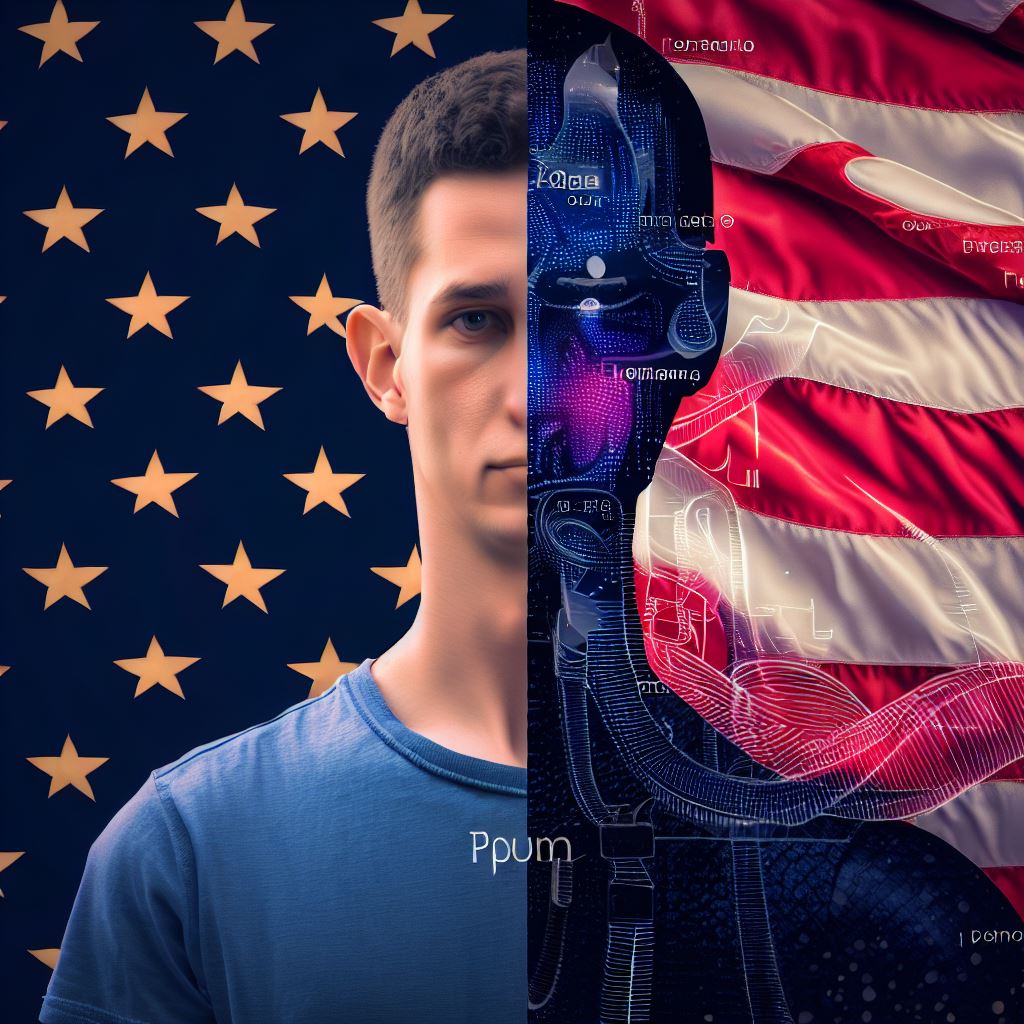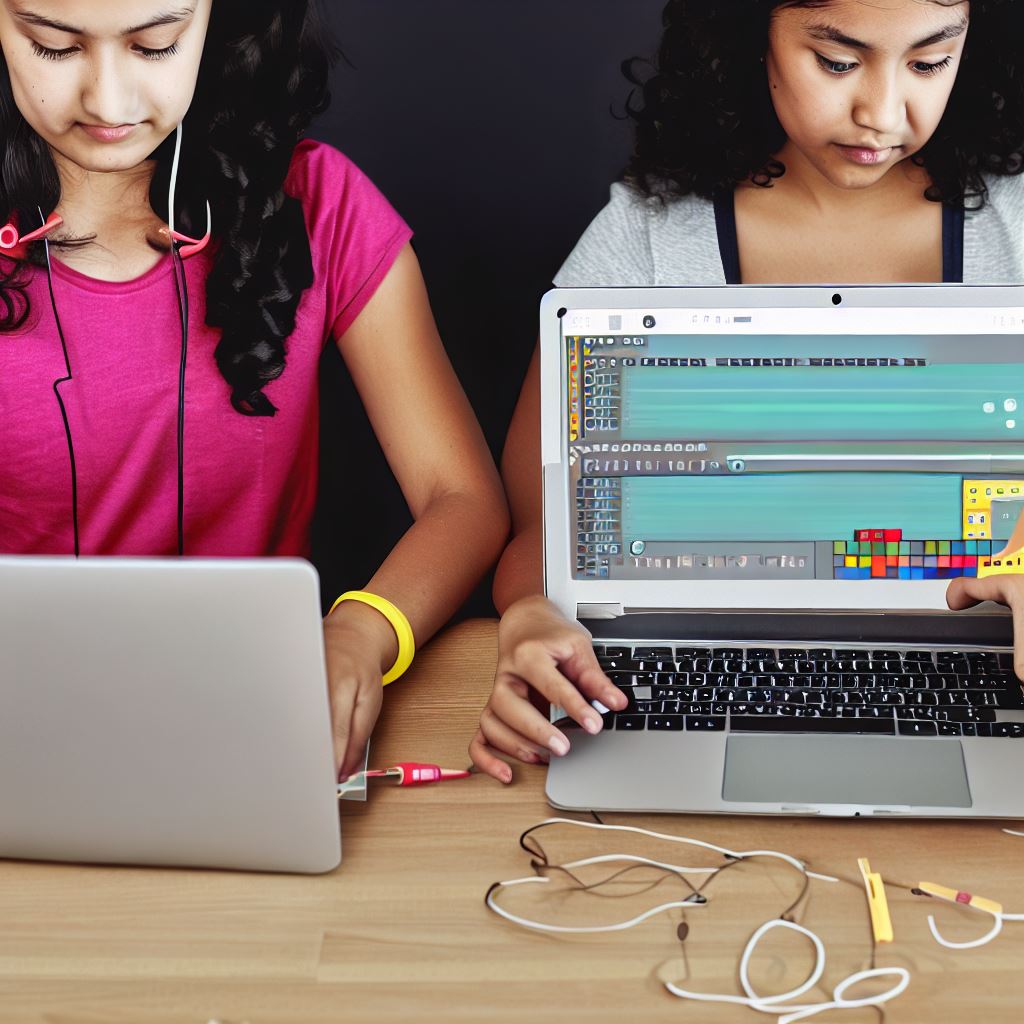Introduction
Using Scratch in the Classroom: A Teacher’s Perspective
Scratch is a visual programming language that allows students to create interactive projects and games.
It is widely used in classrooms to enhance computational thinking and problem-solving skills.
Explanation of Scratch and its importance in the classroom
Scratch provides a creative and hands-on approach to learning computer programming. It engages students in designing and coding their own projects, fostering critical thinking and collaboration.
Brief overview of the teacher’s perspective on using Scratch
As a teacher, I have found Scratch to be a valuable tool in engaging students and promoting their understanding of coding concepts. It allows them to express their creativity while developing technical skills.
In my experience, using Scratch in the classroom has led to increased student engagement and enthusiasm for learning.
It offers an opportunity for students to explore and experiment with coding in a fun and interactive way.
By using Scratch, students can develop logical thinking, problem-solving abilities, and computational skills that are applicable in various subject areas.
It also helps to develop their digital literacy and prepares them for the in-demand jobs of the future.
Moreover, Scratch promotes collaboration and teamwork, as students can share and remix each other’s projects. This fosters a sense of community and encourages students to learn from one another.
Incorporating Scratch into the classroom is a valuable approach to teaching computer programming.
It empowers students to become creators and problem-solvers, building essential skills for their future success.
Benefits of Using Scratch in the Classroom
Enhancing creativity and problem-solving skills
Using Scratch allows students to create interactive stories, games, and animations, which stimulates their imagination and boosts their creativity.
Moreover, when coding in Scratch, students need to come up with solutions to various challenges, improving their problem-solving skills.
Encouraging collaboration and teamwork among students
Scratch is a great tool for fostering collaboration and teamwork among students.
Through pair programming and group projects, they learn to work together and communicate effectively.
They also learn to listen to and value each other’s ideas, enhancing their interpersonal skills and preparing them for future collaborative work environments.
Fostering a positive attitude towards coding and technology
Using Scratch in the classroom helps students develop a positive attitude towards coding and technology.
Creating projects and seeing immediate results boosts their confidence and motivates them to explore further, creating a lifelong interest in coding and technology.
Promoting critical thinking and logical reasoning
Scratch requires students to think critically and utilize logical reasoning to solve problems and debug their programs.
Tech Consulting Tailored to Your Coding Journey
Get expert guidance in coding with a personalized consultation. Receive unique, actionable insights delivered in 1-3 business days.
Get StartedThey learn to analyze and break down complex problems into smaller, more manageable parts, developing their critical thinking and logical reasoning skills.
Furthermore, Scratch’s visual interface allows students to see the cause and effect of their coding decisions, reinforcing their understanding of programming concepts.
Using Scratch in the classroom provides numerous benefits to students.
It enhances their creativity and problem-solving skills, encourages collaboration and teamwork, fosters a positive attitude towards coding and technology, and promotes critical thinking and logical reasoning.
By incorporating Scratch into the curriculum, teachers can create an engaging and interactive learning environment that prepares students for the digital world we live in.
Read: Why Code with Mosh is the Go-To for Learning Python
Integrating Scratch in Different Subjects
In the classroom, Scratch’s versatility shines through across subjects:
- Mathematics: Engage students by having them create interactive math games, reinforcing key concepts.
- Science: Simulate experiments and models, enhancing understanding of scientific principles in an engaging way.
- Language Arts: Foster creativity through storytelling with animations, allowing students to bring narratives to life.
- Social Studies: Immerse students in interactive historical simulations, making past events come alive.
- Art: Encourage artistic expression by designing multimedia projects, combining art with technology seamlessly.
With Scratch, educators can spark curiosity and creativity, making learning an exciting adventure across the curriculum.
Read: An In-Depth Review of Code with Mosh’s JavaScript Course
Overcoming Challenges of Using Scratch in the Classroom: A Teacher’s Perspective
Lack of technical expertise among teachers
Lack of technical expertise among teachers poses one of the main challenges to implementing Scratch in the classroom.
Many teachers feel overwhelmed by the new technology and struggle to keep up with their students.
To overcome this challenge, professional development programs focusing on Scratch should be provided to teachers.
These programs should offer hands-on training and support, enabling teachers to gain the necessary technical skills.
Classroom management and time constraints
Another challenge is classroom management and time constraints.
Teachers often find it difficult to effectively integrate Scratch into their curriculum while ensuring that all students are engaged and on task.
To address this challenge, teachers can plan lessons that incorporate Scratch in a structured and organized manner.
Setting clear expectations, providing step-by-step instructions, and allocating specific time slots for Scratch activities can help manage class time effectively.
Addressing diverse learning needs and skill levels
Addressing diverse learning needs and skill levels is also a challenge when using Scratch.
Some students may already have experience with coding, while others may be completely new to it.
To overcome this challenge, teachers can differentiate instruction by providing various levels of Scratch projects that cater to the different skill levels of their students.
Additionally, encouraging peer collaboration and creating a supportive learning environment can help students learn from each other.
Build Your Vision, Perfectly Tailored
Get a custom-built website or application that matches your vision and needs. Stand out from the crowd with a solution designed just for you—professional, scalable, and seamless.
Get StartedTroubleshooting technical issues
Troubleshooting technical issues is another common challenge teachers face when using Scratch.
Students may encounter bugs or errors in their code that they cannot resolve themselves.
To address this challenge, teachers should encourage students to seek help from their peers before seeking assistance from the teacher.
Creating a classroom culture where students can assist one another fosters problem-solving skills and reduces teacher dependency.
Read: Getting Started with Scratch: A Beginner’s Guide to Coding
Effective Strategies for Implementing Scratch
Implementing Scratch in the classroom requires effective strategies to ensure students have a positive and enriching experience with the programming platform.
It is essential to provide support and guidance while allowing students to explore and create independently.
Providing step-by-step tutorials and resources for students
One strategy for implementing Scratch is to provide step-by-step tutorials and resources.
These materials can help students understand the basics of Scratch programming and guide them through more advanced concepts.
Tutorials should be clear, concise, and engaging to keep students motivated and interested in learning.
Offering hands-on experiences and exploration time
To enhance the learning process, hands-on experiences and dedicated exploration time should be given to students.
Allowing them to practice and experiment with Scratch will strengthen their understanding and problem-solving skills.
Students can create their own projects or complete specific tasks to apply what they have learned.
Encouraging project-based learning and creativity
Project-based learning is another effective strategy for implementing Scratch.
By giving students the freedom to work on meaningful and personal projects, they become more engaged and motivated.
This approach encourages creativity and critical thinking as students solve problems and express themselves through their Scratch creations.
Incorporating collaboration and peer feedback
Collaboration is crucial in Scratch activities. Incorporating opportunities for students to work together in pairs or small groups promotes teamwork and peer learning.
This collaboration allows students to share ideas, troubleshoot together, and learn from one another’s strengths and expertise.
Providing constructive feedback is essential for student growth. Teachers should evaluate and provide suggestions for improvement in students’ Scratch projects.
Feedback should focus on specific areas of improvement, encouraging students to reflect and revise their work.
This iterative process fosters continuous learning and development.
Celebrating and showcasing student projects
Celebrating and showcasing student projects is a great way to boost students’ confidence and pride in their work.
This can be done through presentations, exhibitions, or sharing projects with the school community.
Recognizing students’ achievements reinforces their efforts and encourages them to further explore and excel in Scratch programming.
Effective strategies for implementing Scratch in the classroom involve providing step-by-step tutorials, offering hands-on experiences, promoting project-based learning, incorporating collaboration, giving constructive feedback, and celebrating student projects.
By employing these strategies, teachers can create a supportive and engaging environment that fosters students’ creativity and mastery of Scratch programming.
Read: Why Scratch is the Perfect Intro to the World of Coding

Success Stories: Teacher Experiences with Scratch
Interviewing teachers who successfully integrated Scratch in the classroom
Integrating Scratch in the classroom has been a game-changer for many teachers. Let’s hear from some of them:
- Ms. Thompson: I initially had reservations, but after implementing Scratch, I saw a significant improvement in my students’ problem-solving skills.
- Mr. Rodriguez: Scratch sparked an interest in coding among my students, leading to increased engagement and enthusiasm for learning.
- Ms. Chen: I used Scratch to teach my math class, and it helped students grasp complex concepts through interactive visualizations.
- Mr. Johnson: By incorporating Scratch into our science lessons, students were able to create interactive simulations that enhanced their understanding of scientific phenomena.
Interviewing Teachers Who Successfully Integrated Scratch
We reached out to educators who have effectively integrated Scratch into their classrooms. Here are their insights:
Optimize Your Profile, Get Noticed
Make your resume and LinkedIn stand out to employers with a profile that highlights your technical skills and project experience. Elevate your career with a polished and professional presence.
Get Noticed- Interviewer: How has integrating Scratch enhanced your teaching?
- Ms. Thompson: Scratch allows me to facilitate peer learning and encourages collaboration among my students.
- Mr. Rodriguez: I have noticed a boost in my students’ creativity, logical thinking, and problem-solving abilities since using Scratch.
- Ms. Chen: Scratch has made my lessons more interactive and hands-on, resulting in improved student participation and comprehension.
- Mr. Johnson: With Scratch, I can incorporate cross-curricular activities, making learning more holistic and engaging for my students.
Highlighting Specific Examples of Student Projects and Outcomes
Scratch has empowered students to unleash their creativity and showcase their skills through remarkable projects:
- A group of students designed an animated storybook using Scratch, enhancing their storytelling abilities while practicing coding concepts.
- Students collaborated to create a simulation of the solar system, demonstrating their understanding of planetary movement and gravity.
- A student developed a math game on Scratch, reinforcing concepts such as addition and subtraction while making learning enjoyable.
- Through Scratch, a group of students built a quiz app that tested their peers’ knowledge in different subjects, encouraging healthy competition.
Sharing Testimonials from Students and Parents
Feedback from students and parents further highlights the positive impact of Scratch:
“Exploring Scratch has been the highlight of my school year. I never thought coding could be so much fun!” – Ethan, 5th grade
“As a parent, I am thrilled to see my child excited about learning. Scratch has sparked their curiosity and love for technology.” – Mrs. Davis
“Scratch has given my child an avenue to express their creativity while gaining valuable problem-solving skills. I couldn’t be happier!” – Mr. Patel
Scratch has proven to be a transformative tool in the classroom, with teachers witnessing improved student engagement, critical thinking, and creativity.
The success stories, interviews, and projects shared here demonstrate the incredible impact of Scratch on both teaching and learning.
Conclusion
Benefits and challenges of using Scratch in the classroom
Using Scratch in the classroom offers numerous benefits and challenges. It provides an interactive and engaging platform for students to learn coding and enhance their problem-solving skills.
Despite the challenges teachers may face, such as technical issues or students becoming overly focused on the game-like aspects, the benefits outweigh them.
Encouragement for teachers to embrace Scratch as a valuable teaching tool
Teachers should embrace Scratch as a valuable teaching tool and leverage its potential for fostering creativity and collaboration among students.
By incorporating Scratch into their lessons, teachers can create opportunities for authentic learning experiences and empower students to become active creators rather than passive consumers of technology.
The impact of Scratch on student learning and engagement
It sparks their curiosity, stimulates their critical thinking, and fosters their ability to persevere through challenges.
The use of Scratch in the classroom not only equips students with essential 21st-century skills but also prepares them for future careers in technology and engineering.
As teachers, it is our responsibility to adapt and incorporate innovative tools like Scratch to enhance the learning experience and prepare students for a digitally advanced world.
Let us embrace Scratch and revolutionize the way we educate our students.




